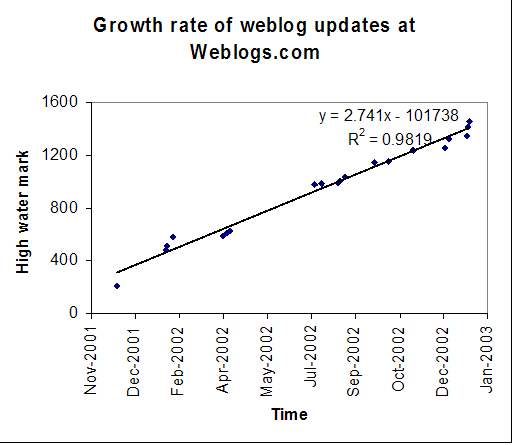Continuing the Weblogs.com watch, it looks like everyone’s favorite list of updated weblogs survived the blogstorm following the MacWorld keynote pretty well. In fact, it’s hit three or four consecutive high water marks in the last three days.
This seems like a good time to update the graph I did in October showing the high water marks over time. For a while in November and December it looked like the rate of growth was slowing down, and the slope is slightly less than it looked then. But if the activity over the last couple of days is anything to go by, it looks like we might expect a slope increase in the next few months.
Here is the updated graph:
I still can’t separate how much of this is due to new weblogs coming on line vs. old ones blogging more frequently. I suspect that this would require more data than Weblogs.com currently collects.

